The website lists all WGs he developed for use with which tweeters. Click on the link in the post before your's
Would these WG types possibly work with the Vifa DX25TG09-04?
That twweter uses the exact same mounting as the XT25 once you remove the faceplate. It will physically fit the same WG but since it doesnt have a phase plug, it wont perform as well. With the WG, the XT25 will outperform the DX25 including low end distortion and off axis response.
Nix that, just took one apart and the dome is attached to the faceplate....
EDIT: Forget about that, just pulled the dome assembly away from the faceplate.
EDIT: Forget about that, just pulled the dome assembly away from the faceplate.
They glue the face plate to the voice coil assembly. It wasn't always that way on earlier XT25's. To keep costs down, that same motor assembly is used with other tweeters. The WG uses 3 posts that go into the tweeter one the face plate is off. The WG bolts to those posts.
The wave guide covers the outer surround on the dome leaving only the dome itself exposed. That allows it to operate higher in frequency with better dispersion, the WG width determines how low in freq it boosts the low end.
The wave guide covers the outer surround on the dome leaving only the dome itself exposed. That allows it to operate higher in frequency with better dispersion, the WG width determines how low in freq it boosts the low end.
Not exactly. The waveguide angle is a major factor in the low frequency cutoff of a waveguide.the WG width determines how low in freq it boosts the low end.
Post 31 shows measurements on axis comparing a flat baffle vs a165mmx115mm waveguide with the throat fitting around the surround vs a 1" throat. The XT25 is one of the most forgiving tweeters. It will work ok in most size guides. By fitting the guide around the surround the off axis will drop off much quicker and on most tweeters the top end doesn't do as well as the smaller throat.
Dave
Dave
Not really interested in the small guide, doesnt fit my needs, just the fact that Tymphany have chosed to have the throat diameter at around 33mm. I wonder has Dave tried this throat diameter with his guides?
the WG width determines how low in freq it boosts the low end.
Not exactly. The waveguide angle is a major factor in the low frequency cutoff of a waveguide.
More width absolutely does extend low end lift, not to say depth doesnt or other factors. When you go deeper with a WG you get away from what is a WG and start to move to tractrix horns. This allows really narrow horns to go lower in cutoff but they then aren't the same type of WG and are plagued with colorations. We have to be carefull about what we call a wave guide vs what is a horn.
In an e-mail to me, Dave said that the reduced opening in the throat of the WG for XT25 raised the highest freq lifted by the guide. This was specific to that application. I relayed this to the man asking about the DX25 because the surround would be covered by the guide used for the XT25 which is the only one I'm aware of that Dave has that will mechanically mount the DX25. My answer was relevant to his tweeter and the depth, width, and angle are fixed for that product.
Last edited:
The benefit of a WG for me is to be able to cross lower with lower distortion on the XT25 thus it needs more excursion room.
While crossing lower can be a virtue, distortion isn't the main reason why. Getting the pattern right is a lot more important than distortion, IMO. (Unless the parts are overdriven!)
And sometimes, especially with fairly steep filters, a crossover doesn't need to be as low as one would think. Dave has an example of an 8" concentric driver with very good polar response, yet the nominal crossover point is a bit over 2kHz!
Basically, in a speaker with a well-chosen driver complement tweeter should be run low enough that the pattern of the WG matches that of the midrange, but no lower unless it can't be helped (woofer has problems at the top of its passband, etc). It makes intuitive sense that one wants the most radiating area possible covering the midrange, without mucking up the pattern.
While crossing lower can be a virtue, distortion isn't the main reason why. Getting the pattern right is a lot more important than distortion, IMO. (Unless the parts are overdriven!)
And sometimes, especially with fairly steep filters, a crossover doesn't need to be as low as one would think. Dave has an example of an 8" concentric driver with very good polar response, yet the nominal crossover point is a bit over 2kHz!
I didnt cross lower for less distortion. I had less distortion so it allowed it. Changing crossover freq is a turn of a knob for me so I listened and found that 1700hz sounded the best. The XT25 in a wave guide handled its low end better than the RS180 did its top end. I used the drivers I had. The lower cross gets away from a 7" beaming.
While looking pretty and I'm not arguing the benefits of smooth dispersion, the waveguides were not panacea of all problems.
If it was all down to dispersion smoothness, there are plenty solution which are better than XT25+wg.
diyaudio.com/forums/multi-way/178187-great-waveguide-list.html
I don't know why waveguided-tweeters sound harsher than plain ones.
Dare I say it ... HOM ? 🙂
From my measurements and listening, I think it generally boils town to two things:
1) direct radiators on waveguides tend to exhibit peaks and dips in the response. This is due to a mismatch between the radiator and the waveguide. Using a small radiator helps, like the 3/4" domes that JBL uses
2) The CSD of speakers on waveguides is often worse than the CSD of plain ol' direct radiators
From my measurements and listening, I think it generally boils town to two things:
1) direct radiators on waveguides tend to exhibit peaks and dips in the response. This is due to a mismatch between the radiator and the waveguide. Using a small radiator helps, like the 3/4" domes that JBL uses
2) The CSD of speakers on waveguides is often worse than the CSD of plain ol' direct radiators
Every tweeter-wave guide combo is different so you cant have a summary statement to generalize. I didnt like 10 of the 12 tweeters I tried in the last 2 years. That doesn't mean all tweeters are bad. There is always a combo you didnt try and past tries dont negate what you havent tried. If measurements could always predict, we wouldnt search forums for opinions. I just don't get why a positive review of a part a person has is negated when one reads a negative generalization posted by someone who doesnt have that part.
IE......."Oh I read that someone said wave guides sound harsh"
Last edited:
Like with many things, the issue becomes much easier to deal with when the waveguide is well designed. For example...if it is too small, if there is not enough room for mouth treatment there will be issues.
Correct me if I'm wrong. This looks like the dark side of active crossovers, flying blind.Changing crossover freq is a turn of a knob for me
Correct me if I'm wrong. This looks like the dark side of active crossovers, flying blind.
I couldnt disagree more, it's active's biggest advantage. Few passive cross over builders ever scrap a cross over to move its freq but would if they could just to experience it. They choose one and live with it. Would that 2 way passive monitor have been destroyed it the cross was move 100hz up or down? I doubt anyone could detect it if I was changing it as they listened but passive guys would argue its day and night. Passive guys will never know.
I don't feel like getting into an active vs passive debate so I'll stop there.
Anyway, the point of my statement that you quoted was to show power handing and strain at those frequencies was fine and not to say the crossover was designed for and optimized at those frequencies. The issue here is the danger of taking statements out of context and ignoring what the statement was addressing, it that case, power handling.
In sharing info on a public forum you would hope that others benefit from what is shared. In this case, I shared that the use of this WG increased its power handling by increasing the lift of its low end 10db. By testing it at 1500hz playing loud, people now see its far safer than the bare tweeter at frequencies you wouldnt think were safe. I burned out the bare tweeter at 2000hz, I now clip the amp into it at 1500hz. Its a data point that wasnt there before FWIW.
Those are nice, but, the price is high and they don't even ship outside of Germany so they are not even an option for most people.Here you have some nice waveguides for the XT tweeter: Waveguide VP158/5030 for XT Tweeter
...
The odd hiccup going on at 12K with those WG's doesnt happen with Dave's. While its likely not that noticeable, Dave's have a clean roll off higher up with no null like that.
Every tweeter-wave guide combo is different so you cant have a summary statement to generalize. I didnt like 10 of the 12 tweeters I tried in the last 2 years. That doesn't mean all tweeters are bad. There is always a combo you didnt try and past tries dont negate what you havent tried. If measurements could always predict, we wouldnt search forums for opinions. I just don't get why a positive review of a part a person has is negated when one reads a negative generalization posted by someone who doesnt have that part.
IE......."Oh I read that someone said wave guides sound harsh"
The statement I made were not opinions; they were facts:
1) direct radiators on waveguides tend to exhibit peaks and dips in the response. This is due to a mismatch between the radiator and the waveguide. Using a small radiator helps, like the 3/4" domes that JBL uses
2) The CSD of speakers on waveguides is often worse than the CSD of plain ol' direct radiators
These statements are not subjective; when you constrain the radiation of a driver there are consequences. The two that I mentioned may be objectionable to some listeners. No waveguide is perfect, though some waveguides are better than others. Yet every waveguide will distort the impulse response. Measure five, ten, or a hundred and you'll see what I mean.
Dave posted responses for his guides that he actually took.
I dont doubt your expertise. I am Mr EQ so peaks/dips arent an issue to me. I'm happy with the final result. I'm sure a purist who spends more on interconnects than my speakers cost would object. Its just not for them. As far as wave guides go, these are really well done.
I dont doubt your expertise. I am Mr EQ so peaks/dips arent an issue to me. I'm happy with the final result. I'm sure a purist who spends more on interconnects than my speakers cost would object. Its just not for them. As far as wave guides go, these are really well done.
It's no problem for some 😉. This isn't about passive versus active it's about knowing precisely what each change does..as well as what it achieves. I would happily do it either passive or active.Few passive cross over builders ever scrap a cross over to move its freq but would if they could just to experience it. They choose one and live with it..
I can turn a knob to vary a cross over freq to test power handling but some how that demonstrates the dark side of active cross overs....flying blind.
I think the case here is that the WG makes the XT25 so much wider in effective band than a bare XT25 that its overlap to the usable RS180 range can land anywhere between the frequencies I tried with the end result sounding fine with any of them. To exaggerate the example, if I was matching the RS180 with an RD50 from BG, the cross over is not limited to one dead on freq because their ranges overlap so much.
I think the case here is that the WG makes the XT25 so much wider in effective band than a bare XT25 that its overlap to the usable RS180 range can land anywhere between the frequencies I tried with the end result sounding fine with any of them. To exaggerate the example, if I was matching the RS180 with an RD50 from BG, the cross over is not limited to one dead on freq because their ranges overlap so much.
Here are a few graphs of the 8x5 waveguide ( spinmonster has ) vs flat baffle on the XT25TG30.
I threw some passive parts on the waveguide to bring the fr down close to the flat baffle. from 2-5k the guide is still a few dbs higher.
Flat baffle
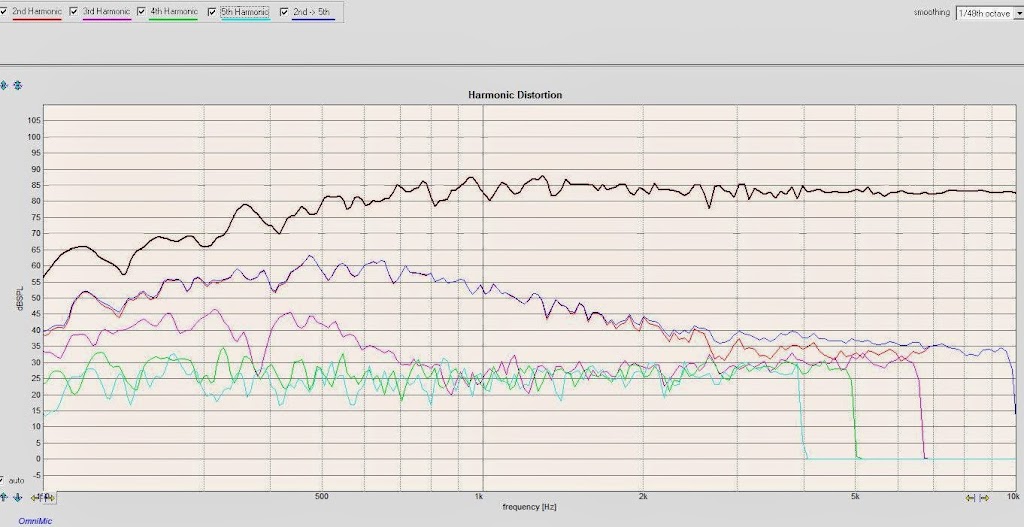
Waveguide

Flat baffle
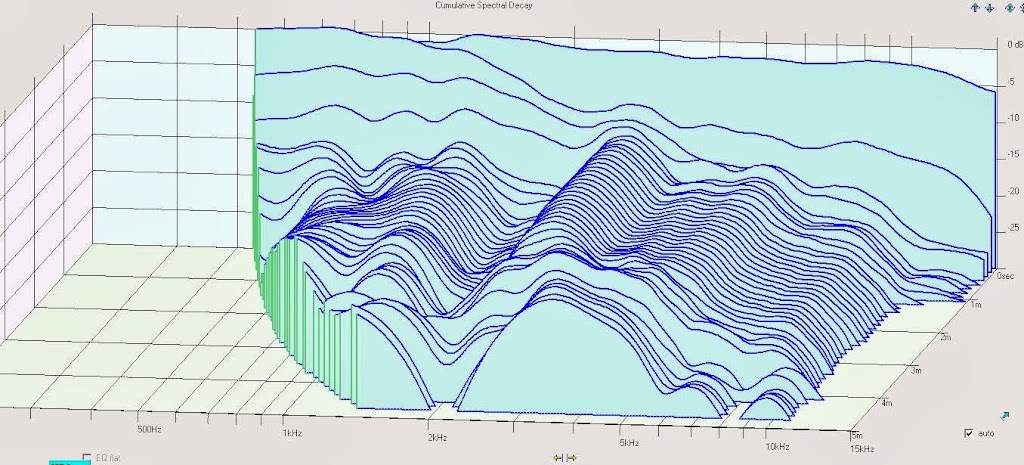
Waveguide

Flat Baffle

Waveguide
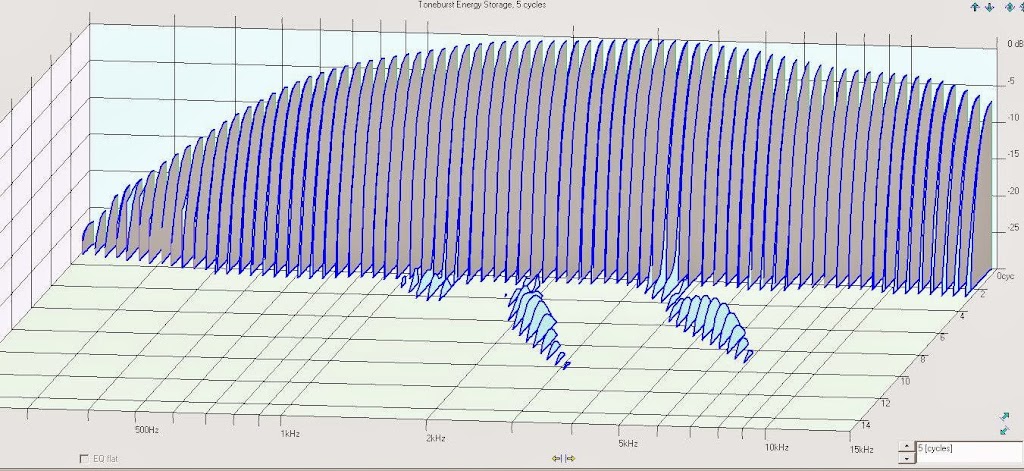
Flat baffle

Waveguide
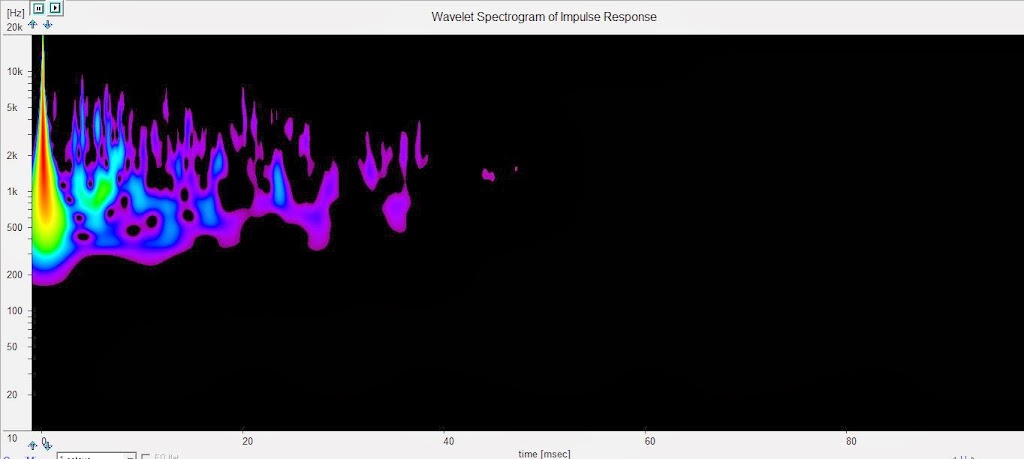
Flat baffle 0-90 horizontal
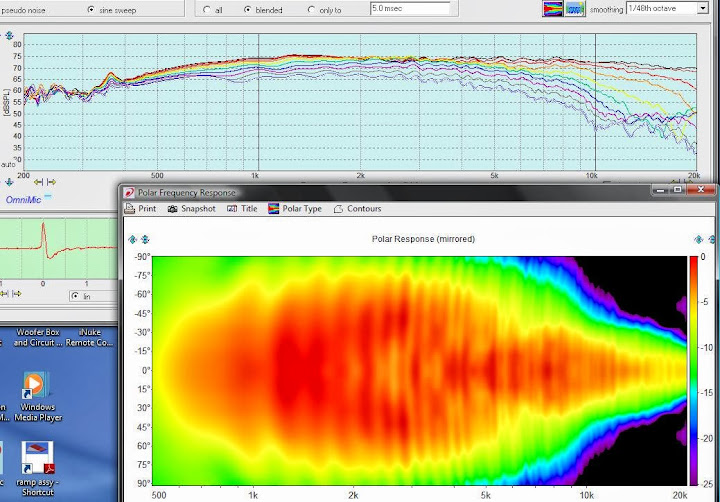
Waveguide 0-90 horizontal no xo parts

Dave
I threw some passive parts on the waveguide to bring the fr down close to the flat baffle. from 2-5k the guide is still a few dbs higher.
Flat baffle

Waveguide

Flat baffle

Waveguide

Flat Baffle

Waveguide

Flat baffle

Waveguide

Flat baffle 0-90 horizontal

Waveguide 0-90 horizontal no xo parts

Dave
- Status
- Not open for further replies.
- Home
- Loudspeakers
- Multi-Way
- Waveguide for XT25